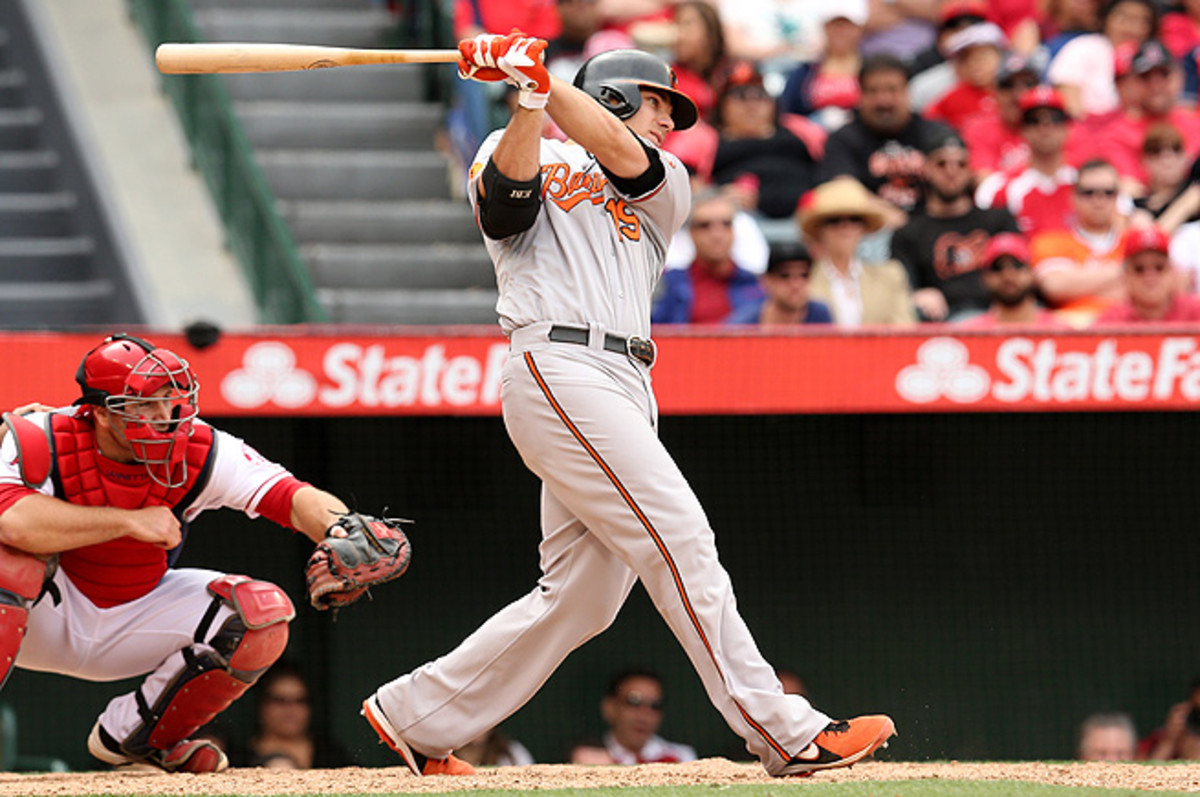Fantasy baseball Stat Focus: Chris Davis' ISO explains hot start


Chris Davis' hot start this year -- he belted four homers and drove in 17 runs in the season's first week -- shouldn't have come as a huge surprise. It's difficult to predict any player having four home runs and 17 RBIs in a six-game span, but Davis proved his power bona fides a year ago. Still, Davis quickly became a sell-high candidate, especially after hitting two more homers the next week and one more in the third week of the season.
WEEK 6 PREP: Fantasy baseball Weekend Primer | Weekly Planner | Waiver Wire | Pitching Report | Injury Report | Weekly Roundtable | Stats Focus | Trade Tips | Prospect Watch
The Orioles first baseman didn't stop there -- he blasted another two home runs and drove in seven runs in the fourth week of the season. It wasn't until last week that he failed to hit one out of the park; he missed one game due to a right knee injury yet still posted a .364 OBP for the week. Even if his spike in walk rate was hard to predict, Davis has proved he deserved better than the middling average draft position he had back in March. Owners may have viewed the 33 homers he hit in 2012 with skepticism, unsure he could do it again. However, if they looked beyond the surface numbers down to a stat called isolated power (ISO), they would have found a power hitter in whom they could believe.
ISO measures a player's ability to hit for extra bases and is rather simple to calculate -- it's just batting average subtracted from slugging percentage. The reason for using this stat is clear when looking at a player like Ichiro Suzuki. In 2009, Ichiro slugged .465, three points higher than David Ortiz. No one would ever say Ichiro was a better power hitter in '09 than Ortiz (he hit just 11 homers to Ortiz's 28), but according to the stat, he outslugged him. ISO helps account for that.
Ichiro's .465 slugging percentage was built on the shoulders of his .352 batting average. That means his ISO was .113, a number reserved for slap hitters like Ichiro. While .462 represents Ortiz's worst slugging percentage since his Minnesota days, he didn't actually hit for less power than he had in seasons past. Rather, his slugging percentage was so low because he hit just .238 that year. His .224 ISO was below his standards, but still good enough for 39th in the majors. When evaluating power hitters, their superficial numbers -- such as homers and slugging percentage -- are undoubtedly instructive. But ISO represents the best measure of what a player brings to the table strictly as a power hitter.
Let's circle back to Davis. Take a look at the top-20 players by ISO from last year, and it reads like a list of All-Stars. Josh Hamilton, Edwin Encarnacion, Miguel Cabrera, Ryan Braun and Josh Willingham comprise the top five. Later on, there are names like Jay Bruce, Curtis Granderson, Adrian Beltre, Mike Trout and Robinson Cano. Coming in at No. 19 on the list is Davis, with a .231 ISO. And really, owners should have known he'd be in that range. He had a .264 ISO in 317 plate appearances with the Rangers in 2008, and a .205 ISO in 419 plate appearances in 2009. The power has always been legit. He just needed someone to give him a chance. Once the Orioles did, it only made sense that he posted the first 30-homer season of his career. Chances are it won't be the last.
With nine homers in 127 plate appearances this year, Davis' ISO is sitting at a cool .346, which ranks third in the league behind Justin Upton and Mark Reynolds. That number is bound to come down as the season wears on (Josh Hamilton led the league in ISO last year at .292), but Davis projects as one of the best power hitters for the remainder of the season. Resist the temptation to sell high. This is a trajectory he can follow all season long.
